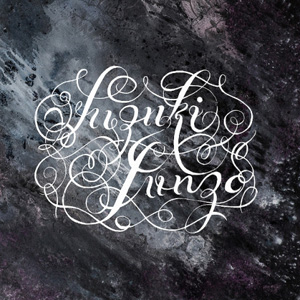Suzuki Junzo, "Portrait of Madeleine Elster"
 Suzuki Junzo has spent much of his career shifting between gentle, almost jazz influenced guitar playing and full on unhinged distortion, both as a solo artist and with projects such as Astral Traveling Unity. That hopping between extremities remains solidly in place on Portrait of Madeleine Elster, which is almost evenly split between gentle, jazz influenced playing and maximum, room clearing distortion. Its best moments, however, are when the two worlds overlap with one another and create an entirely different beast.
Suzuki Junzo has spent much of his career shifting between gentle, almost jazz influenced guitar playing and full on unhinged distortion, both as a solo artist and with projects such as Astral Traveling Unity. That hopping between extremities remains solidly in place on Portrait of Madeleine Elster, which is almost evenly split between gentle, jazz influenced playing and maximum, room clearing distortion. Its best moments, however, are when the two worlds overlap with one another and create an entirely different beast.
It is only on the title song that Junzo's playing stays muted and calm throughout.Gently strummed electric guitar is the only major element, occasionally drifting into jazz improvisation at times and then pulling to subtle strums.On "La Notte," Junzo's guitar becomes more distorted and raw in its sound, but staying under his control.The whole song ends up enshrouded by a lo-fi rehearsal room ambience, and guest Ikuro Takahashi's (LSD March) drumming has an erratic, extremely unique quality to both the sound and the rhythms.
Takahashi also appears on "When the Grey Skies Turn Blood Red," but his playing is obscured somewhat by Junzo's decidedly unsubtle, balls out guitar noise.Squealing, shrieking, buzzing feedback is the name of the game, and it does not relent for the nearly 16 minute piece.The drums have the same odd tuning to them, and when they can be heard the hybrid of free jazz improvisation and grindcore style blastbeats supplement the guitar squall wonderfully.
The closing composition, "Dance of the Inhabitants of the Invisible Tower in the Ring of Holy Mountain," makes for an ideal centerpiece of the album, and also perfectly encapsulates Junzo's sound and style.Beginning with a slightly ragged strummed guitar motif, layers are piled atop it at the perfect pace.Distorted harmonica, what sounds to be bowed guitar and possibly electronics all slowly enter the mix, resulting in an intense, dramatic crescendo that began with the simplicity of a single electric guitar strum.
Even though Portrait of Madeleine Elster is heavily built upon these opposing approaches of gentle and harsh, it is the overlap that leads it shine most.During its noisiest passages there remains, sometimes deeply buried, a sense of true beauty.At the same time, the gentle strums and deliberate notes have a distorted, raw coating to them that keeps the playing from becoming too placid, accenting it with just the right amount of grime.It is this tension between the two that give this album the strength and power it has, and it is a sound like no other.
samples:
- When They Grey Skies Turn Blood Red
- La Notte
- Dance of the Inhabitants of the Invisible Tower in the Ring of Holy Mountain
 



